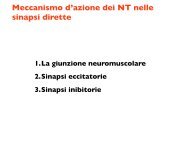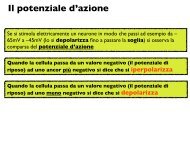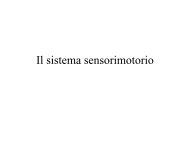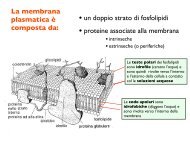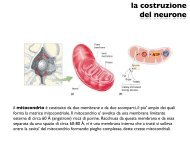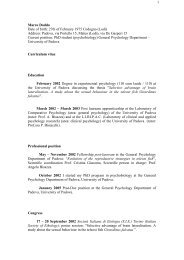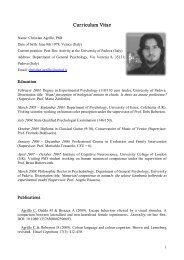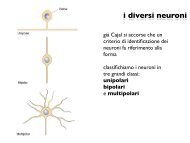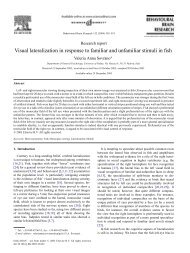Sexual behaviour of immature male eastern mosquitofish: a ... - CPRG
Sexual behaviour of immature male eastern mosquitofish: a ... - CPRG
Sexual behaviour of immature male eastern mosquitofish: a ... - CPRG
You also want an ePaper? Increase the reach of your titles
YUMPU automatically turns print PDFs into web optimized ePapers that Google loves.
734 a. bisazza et al.<br />
1982), and probably suffer high mortality. Indirect evidence for these costs has<br />
been found by Krumholz (1963) in populations <strong>of</strong> Gambusia manni (Hubbs). He<br />
found that populations living in habitats with a high density <strong>of</strong> predators had a<br />
sex ratio biased towards fe<strong>male</strong>s, and a low mean size <strong>of</strong> adult <strong>male</strong>s, compared<br />
to those observed in populations living in habitats with low predator density.<br />
Among the possible adaptive explanations is the ‘ training ’ hypothesis.<br />
Copulatory experience during the stages preceding maturation may enhance the<br />
copulatory efficiency <strong>of</strong> <strong>male</strong>s. As far as we know, in fish there are no examples<br />
<strong>of</strong> experience enhancing performance. However, it is known that young threespined<br />
sticklebacks (Gasterosteus aculeatus L.) fed in the laboratory with live<br />
prey are more efficient foragers when they become adults than individuals fed<br />
with frozen food (Ibrahim & Huntingford, 1992). Our results do not seem to<br />
support an analogous explanation for copulatory activity. In fact, mosquit<strong>of</strong>ish<br />
<strong>male</strong>s with precocious experience were more efficient in their copulatory attempts<br />
than <strong>male</strong>s grown in aquaria where fe<strong>male</strong>s were not present, but only in the first<br />
10 min after meeting a fe<strong>male</strong>. Later on, naïve <strong>male</strong>s were as efficient as<br />
experienced <strong>male</strong>s. It seems therefore unlikely that <strong>immature</strong> <strong>male</strong>s are sexually<br />
so active for weeks in order to get trained, if after a few minutes <strong>of</strong> copulatory<br />
attempts naïve <strong>male</strong>s become capable <strong>of</strong> normal sexual <strong>behaviour</strong>.<br />
The other possible explanation tested is that <strong>immature</strong> <strong>male</strong>s, through an<br />
intense sexual activity, gain information about the probable reproductive success<br />
they would attain by maturing at their actual size. As in most poeciliid species,<br />
<strong>male</strong> mosquit<strong>of</strong>ish stop growing or grow little after reaching sexual maturity, but<br />
considerable variation in this trait is generally found within populations.<br />
Previous studies indicate that in G. holbrooki the success <strong>of</strong> copulatory attempts<br />
is inversely related to <strong>male</strong> size when competition is absent (Bisazza, 1993;<br />
Bisazza & Marin, 1995). On the contrary, when sex ratio is biased towards<br />
<strong>male</strong>s, larger <strong>male</strong>s monopolize fe<strong>male</strong>s and keep subordinate <strong>male</strong>s far from<br />
fe<strong>male</strong>s (Bisazza & Marin, 1991). The reproductive success <strong>of</strong> <strong>male</strong>s therefore<br />
depends critically on the size at which they mature in relation to the social<br />
environment: at low population densities and when the sex ratio is biased<br />
towards fe<strong>male</strong>s, <strong>male</strong>s are expected to mature at a small size, and vice versa, as<br />
shown by computer simulations and field study (Bisazza & Marin, 1995; Zulian<br />
et al., 1995). In natural populations, the proportion <strong>of</strong> <strong>male</strong>s and population<br />
density usually increase from the beginning <strong>of</strong> the breeding season onwards.<br />
None the less, there are frequent large variations both between and within<br />
populations in different years (Zulian, 1990). A simple rule <strong>of</strong> thumb, e.g.<br />
mature small at the beginning <strong>of</strong> the breeding season and at a larger size later on,<br />
would not be very efficient.<br />
Immature <strong>male</strong>s that are able to test their potential reproductive success and<br />
consequently ‘ decide ’ whether to mature or to keep growing, would therefore be<br />
favoured. The present results seem to support this hypothesis: the size attained<br />
at maturity by <strong>male</strong>s is influenced by the frequency <strong>of</strong> sexual interactions with<br />
fe<strong>male</strong>s. Social control <strong>of</strong> body size at maturity is a well known phenomenon in<br />
poeciliids. It has been shown that the frequency <strong>of</strong> aggressive interactions with<br />
adult <strong>male</strong>s influences the size <strong>of</strong> sexual maturation <strong>of</strong> <strong>male</strong>s in other poeciliid<br />
species (Borowsky, 1973b; Sohn, 1977; Farr, 1980), as well as in G. holbrooki<br />
(Zulian et al., 1993). In the present experiments, the frequency <strong>of</strong> aggression by






